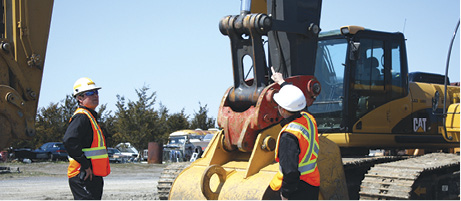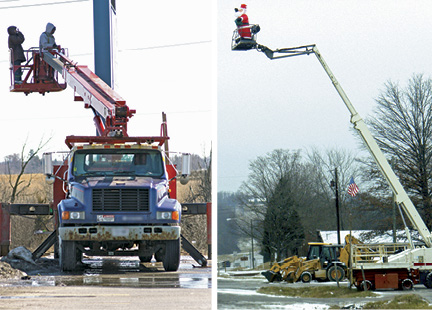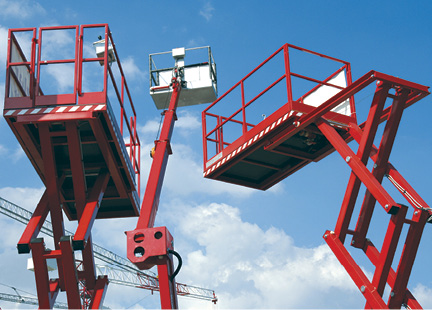Key to Surviving Hydraulic Failure

Seal failure is inevitable, and seals are 99% less likely to be on the inspection list. If seals are in an inspection program, then it has been determined that these seals are critical in your particular application. A critical seal would be one that if failure occurs would create a hazard for personnel and/or the public. In most cases where components have to be disassembled for inspection, seals should be replaced. The cost of hydraulic seals is pennies compared to the time and resources put into disassembling components to merely inspect the seals.
Seals deteriorate over time, and it may not be obvious by inspection to determine the condition of the seal without laboratory analysis.
Critical in regards to safety would include components such as pumps, valves, and actuator seals. The seals in these critical components would be utilized in aircraft, amusement park rides, and elevating devices. Failure of a seal in these critical areas could lead to injury and death. If a critical seal failure occurs in an aircraft, survival would be less likely.
Risk is reduced by a maintenance plan where critical seals are replaced after so many service hours or a combination of non-service hours. Seals that are not in service for long periods can deteriorate; therefore, it cannot be assumed that seals will last longer if not in use.
Four common causes of seal failure are
- improper installation
- system contamination
- misapplication
- chemical breakdown and heat degradation.
To avoid any thought of surviving hydraulic seal failures, consider how hydraulic seals and safety are closely related. For more about seal safety, refer to the HSAC High Risk Maintenance-Level course.
Non-Conductive Hydraulic Hose
A thermoplastic hose does not have metal wire reinforcement. This type of hose has been designed as a non-conductive hose, meaning it will not transmit or conduct electricity and is commonly used on equipment exposed to high voltage.
Utility bucket trucks used to elevate workers to access electrical and phone services are built using non-conductive hydraulic hoses. Booms on bucket trucks have a non-conductive boom section, along with non-conductive hydraulic hoses, which prevents any contact with high voltage from grounding to the earth. Grounding high voltage is extremely dangerous. Utility companies are highly trained and are aware of the importance of non-conductive hydraulic hoses. Rigorous inspections include determining the presence of the correct hose. The thermoplastic hose does not contain any steel wire reinforcement. The steel wire in a traditionally constructed hydraulic hose will conduct electricity.

Utility workers receive great amounts of training on this subject, however, not all users of bucket trucks are aware of the related hazard. Bucket truck use has expanded to tree service and sign companies. Smaller contractors will often purchase used utility bucket trucks previously owned by utility companies at auctions. When these used bucket trucks are put into service by workers who are not trained or made aware of the differences between conductive and non-conductive hoses, the risk becomes extreme. Non-conductive hoses that fail must be replaced by non-conductive hoses! Many times, I have seen conductive hoses in place of non-conductive because the worker was not trained.
Typically the non-conductive hose is orange in color, and it has the SAE and DIN standard information printed on it. If you have equipment requiring non-conductive booms, be sure to inspect for non-conductive hydraulic hoses and also train personnel on this subject.
The following question was received from an entertainment company.
Answer: First and foremost, all equipment should be operated within the safety guidelines provided by the manufacturer; I would strongly recommend that you direct any inquiries about the safe operation of specific equipment and applications to the manufacturer in question. To prevent injury, there are many more considerations and requirements. Should the velocity fuse be activated, always refer to the manufacturer and direct safety inquiries to them about instructions for manually lowering lifts and resetting fuses.
I will begin by describing how a velocity fuse functions. There are many manufacturers of velocity fuses, and they are used in many elevating devices, including forklifts or any device used in a critical application.

The velocity fuse is designed to stop hydraulic fluid, which is being used to hold a hydraulic cylinder’s load – in your case, the elevated lift should a hydraulic hose, tube, or seal rupture. When a hydraulic fluid line breaks, the fuse detects this and closes blocking fluid from exiting through the break. This is a very general description. The detection is a sudden change in pressure or flow. When a rupture occurs, the fluid holding the load is under pressure and this pressure forces the fluid to the breach. The sudden fluid pressure drop or the velocity of the fluid traveling towards the breach signals the fuse to close. The trigger occurs at approximately 30% over the normal function flow rate. Do not rest assured the velocity fuse will work under all failure circumstances. The velocity fuse will only function within certain flow and pressure parameters. For example, it will be ineffective against slow leaks because the velocity of the fluid is not high enough to activate the fuse. In some situations, the fuse could close when it is not supposed to. An example is a change in fluid viscosity from cold conditions.
Lifts and elevating devices play a large role in arts and entertainment, and each of your applications must consider the risks should a lift lower or fail. For example, if a prop is connected to a lift and a truss or platform and the lift lowers slowly from a failed hose or seal, would the lift pull the truss and platform down with it? This could pose a very dangerous situation!
A velocity fuse is not completely reliable and will not function in all failure conditions. So yes, it is possible that your lift could drop or descend even if it has a velocity fuse installed.
The above articles have been reprinted with permission. Images courtesy of Hydraulic Safety Authority of Canada, Inc.
The IFPS is now an authorized provider of HSAC’s Hydraulic Safety Awareness e-learning courses.



I appreciate the information on surviving hydraulic failure. I agree that it is important to ensure that you are keeping up on the seals to ensure that you avoid accidents or injury. I would imagine that having a broken seal, especially on the big equipment, can really do some harm and cause problems for a lot of people.
I had no idea that one of the most common causes of a hydraulic seal failure is because of heat degradation. If that’s the case, then it sounds like you want to get some really flame-resistant materials for your hose and seal. What kind of materials would you recommend to counteract this? I know that PVC is a flame-resistant material, but I have no idea how often it’s used in hoses.
A hydraulic seal failure is more serious than I thought. I didn’t know that if could eventually lead to injury and death. It makes more sense why I’ve heard that many people make sure to inspect seals annually.